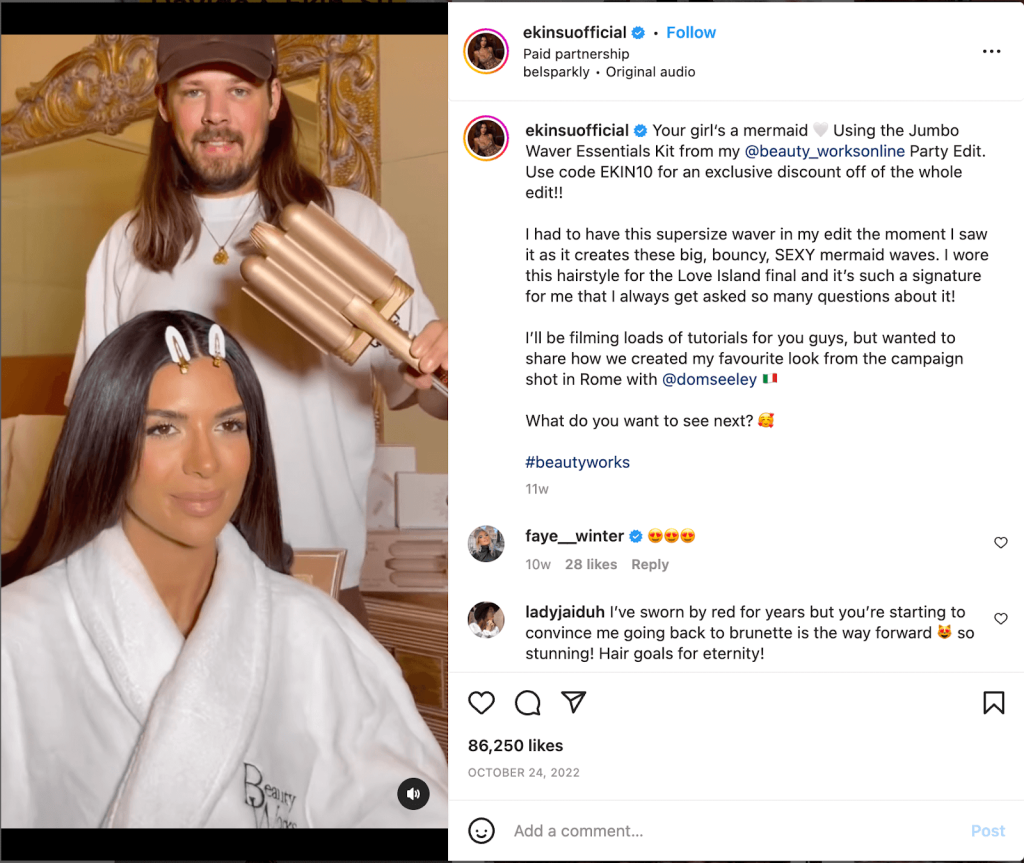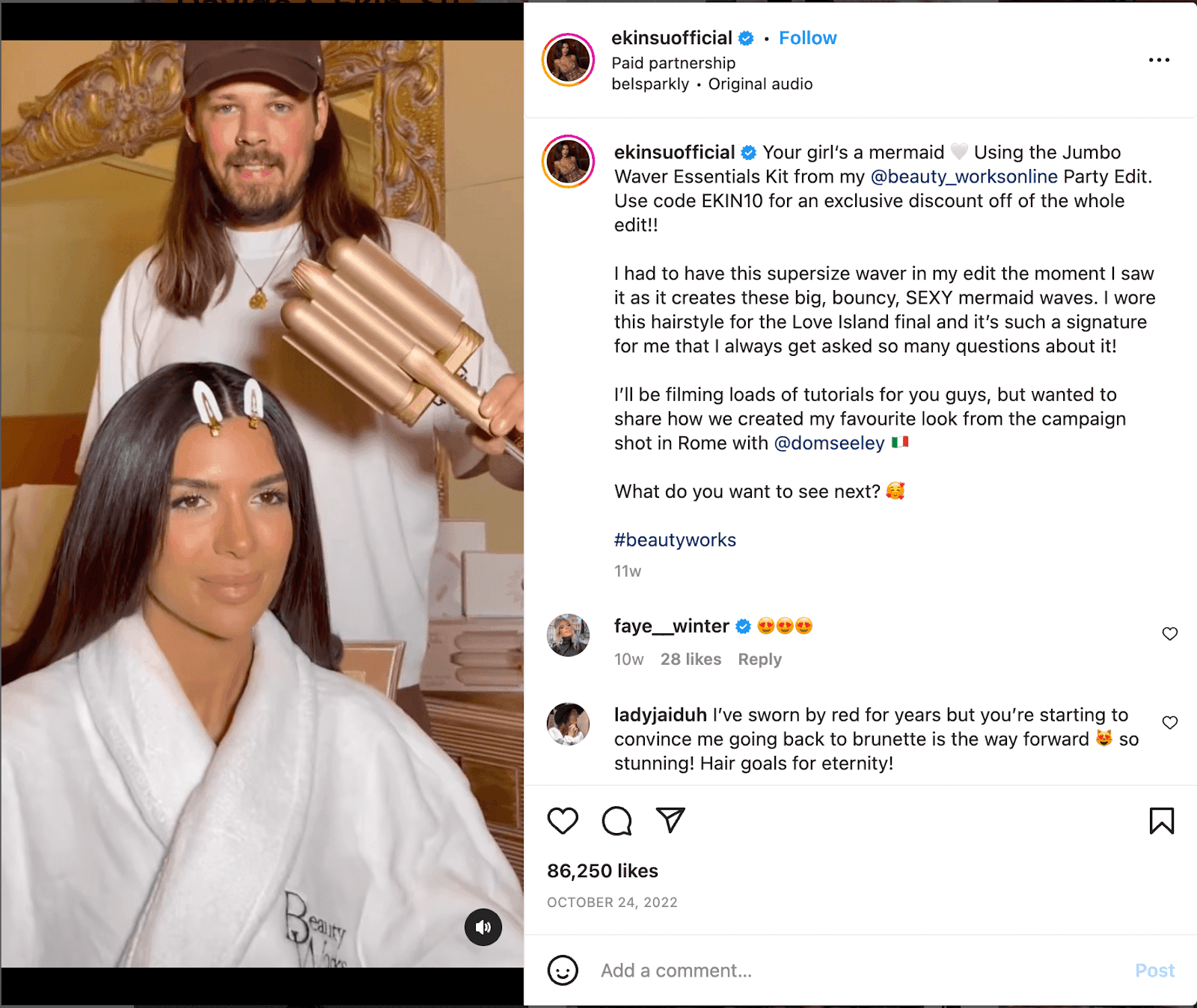How To Scale Influencer Marketing: 7 Ways To Take Creator Partnerships To The Next Level
- •Navigating the Expansion of Influencer Collaborations
- •1. Accelerate Influencer Discovery via Technology
- •2. Enhance Influencer Engagement with Performance-Based Payment Models
- •3. Broaden Your Influencer Marketing Approach with Strategic Experimentation
- •4. Streamline Content Collection with Influencer Monitoring Tools
- •5. Streamline Operations with Templates, Automation, and Documentation
- •6. Maximize Impact by Repurposing Influencer-Generated Content
- •7. Amplify ROI by Focusing on High-Performance Influencers, Channels, and Niches
Scaling Your Influencer Marketing: A Guide for Growth
Navigating the Expansion of Influencer Collaborations
Embarking on the influencer marketing journey is straightforward at first — a few collaborations, direct interactions with influencers, and simple tracking of content. But what occurs as your program expands?
- Growing number of creator partnerships
- Difficulty in tracking influencer-generated content
- Team strain from excessive creator communications and campaign management
If enhancing your influencer marketing strategy is a priority for you this year, you’re in the right spot.
Here are seven strategies to efficiently scale your influencer marketing endeavors without overextending yourself.
1. Accelerate Influencer Discovery via Technology
Ideal for:
- Time-consuming searches for ideal influencers
- Aiming to grow your influencer connections
- Challenges in determining suitable creators for your brand
Avoid the draining hours spent on platforms like TikTok searching for influencers. Questioning their potential ROI shouldn’t be a constant worry.
With the Find Me Creators Database, quickly find influencers, assess their performance and audience data, and access their emails in a few clicks. The database boasts over 200 million influencers from TikTok, Instagram, and YouTube. Precisely find creators matching your criteria, similar to finding the right key for a lock.
Filter Types:
- Influencer Filters: Quantitative and qualitative metrics like growth rate, follower count, engagement rate, etc.
- Audience Filters: Demographic details of the influencer’s followers like age, location, gender, interests, etc.
???? Pro-tip: Start with two or three filters and refine your search gradually to avoid overlooking ideal influencers by being too selective initially.
Analyze and Search with the Find Me Creators Database
Next, examine influencer profiles using the database’s vetting tool for detailed insights into their audience, popular posts, and content performance. For example, see the data for a hair influencer like Suman.
The database locates publicly available emails, accessible in one click. Enter influencer usernames for profile analysis, eliminating the hassle of manual outreach.
For already favored creators, discover similar ones using the influencer lookalike feature.
2. Enhance Influencer Engagement with Performance-Based Payment Models
Ideal for:
- Reducing influencer marketing risks
- Seeking measurable ROI from creator partnerships
- Desiring stronger commitment from influencers
In the evolving landscape of influencer marketing, adopting a performance-based compensation model can significantly reduce financial risks while ensuring a higher return on investment. This approach is particularly effective when:
- You’re concerned about the uncertain ROI from influencer partnerships
- You aim for tangible results like increased sales, website traffic, or user sign-ups
- You want to foster a deeper sense of commitment and motivation among influencers
The essence of this model is straightforward: influencers are rewarded based on the tangible outcomes they deliver – be it sales, sign-ups, downloads, or clicks. This method offers dual benefits:
- Low-risk Strategy: This approach mitigates the risk of investing in partnerships that may yield minimal returns. You only incur costs when the influencer successfully drives the desired action, ensuring a more efficient allocation of your marketing budget.
- High-reward Potential: By tying compensation to performance, influencers are incentivized to generate more significant results. This not only amplifies potential revenue but also aligns influencer efforts directly with your marketing objectives.
To implement this, create trackable mechanisms like affiliate codes or UTM links. These tools enable precise attribution of traffic and conversions to specific influencers. For instance, Keara Callahan uses her unique discount code, KEARACALLAHAN50, allowing her followers to save on their first Kinder Beauty order. This not only drives sales but also helps in measuring her direct impact.
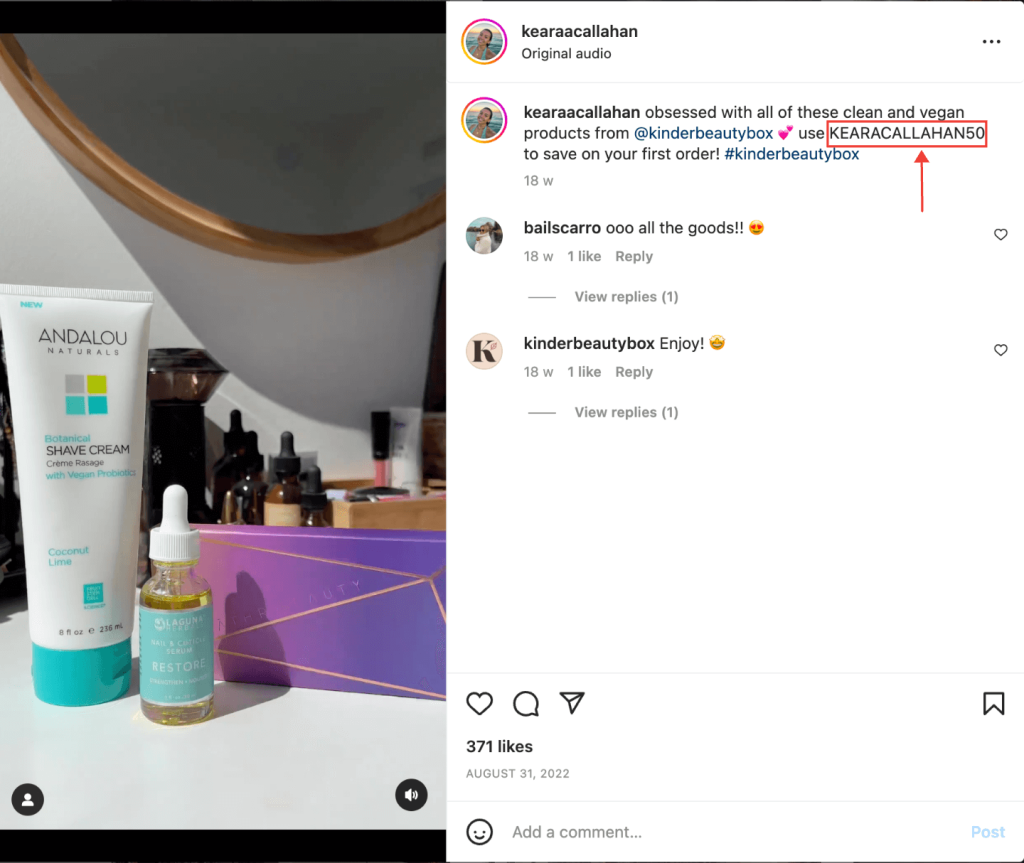
However, it’s crucial to note that not all influencers are open to a purely performance-based pay structure. Combining a fixed base rate, which covers the basic content creation costs, with additional performance-based incentives, can be a more balanced and appealing approach. This ensures fair compensation for the influencer’s effort while keeping the focus on performance-driven results.
3. Broaden Your Influencer Marketing Approach with Strategic Experimentation
Ideal for:
- Limited experience with various influencer types/channels
- Aiming to increase brand visibility
- Budget availability for new marketing avenues
Expanding your influencer marketing strategy involves stepping out of your comfort zone and exploring new territories. This is particularly beneficial when:
- You’ve achieved success with specific platforms or influencer types but haven’t ventured beyond them.
- You’re curious about different influencer collaboration models but haven’t tried them.
- You’ve pigeonholed your strategy into a particular niche or influencer category and haven’t explored others.
Consider the case of writer and influencer Baron Ryan, who partnered with Ubisoft to promote Nintendo Switch products. This unexpected collaboration highlights the potential of exploring uncharted avenues in influencer marketing.
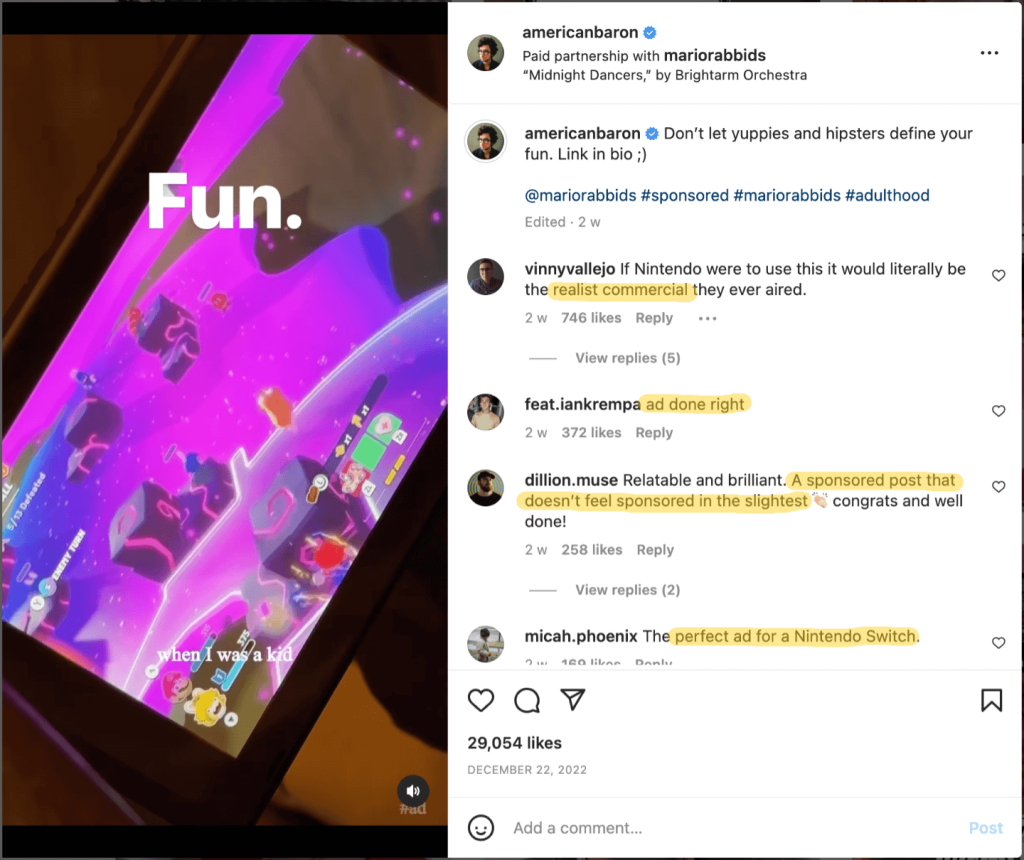
To broaden your horizons, consider:
- Exploring New Influencer Categories: If you’ve only worked with fashion influencers, why not try partnering with lifestyle or tech influencers? Different influencer categories can offer fresh perspectives and access to new audiences.
- Venturing into New Platforms: If your strategy has been predominantly focused on one platform, say TikTok, exploring YouTube or Instagram could unlock new opportunities and audiences.
- Experimenting with Different Collaboration Models: Beyond standard sponsored posts, consider other collaboration models like affiliate marketing, product gifting, or event partnerships.
However, it’s essential to maintain strategic focus. Experiment within the realms of your brand identity and audience interests. For instance, if you’re a fitness brand, collaborating with
yoga influencers could be a logical step, whereas partnering with food influencers might not align as well with your brand’s core message. The key is to take calculated risks that complement your brand’s ethos and marketing objectives.
- Diversifying Content Types: Experiment with various content formats like videos, stories, or live sessions. Different formats can engage audiences in unique ways and provide insights into what resonates best with your target market.
- Mixing Paid and Organic Efforts: While paid collaborations are common, consider integrating organic, authentic engagements that can sometimes yield more genuine connections with audiences.
Always remember, experimentation should be strategic and measured. Set clear objectives and KPIs for each new venture to assess its effectiveness. This approach ensures that your experiments are purposeful and contribute to a deeper understanding of what works best for your brand.
4. Streamline Content Collection with Influencer Monitoring Tools
Ideal for:
- Needing efficient content collection for reporting
- Difficulty in tracking influencer posts, especially ephemeral content like stories
- Intent to repurpose or redistribute creator content
As your influencer collaborations grow, keeping track of all the generated content can become overwhelming. This is where influencer monitoring tools become invaluable. They act like vigilant assistants, constantly monitoring and gathering content across various platforms. This tool is particularly beneficial for:
- Efficient Content Aggregation: Collect all influencer content in one place for easy access and analysis. This includes posts, stories, videos, and any other content format used in your campaigns.
- Tracking Real-Time Engagement: Monitor the performance of influencer posts as they go live. This includes tracking engagement metrics like likes, comments, shares, and overall reach.
- Ephemeral Content Capture: With content formats like Instagram Stories being temporary, a monitoring tool can capture these before they disappear, ensuring you have a complete record of all content produced.
For instance, the Find Me Creators Database not only assists in discovering and analyzing influencers but also offers robust monitoring capabilities. Create a campaign, define specific hashtags or keywords, and the tool will automatically track and compile all relevant content. This feature is particularly useful for:
- Campaign Reporting: Compile comprehensive reports with ease, showcasing the full breadth of content created and its impact.
- Content Repurposing: Identify high-performing content that can be repurposed for other marketing channels, maximizing the value of each piece of content created.
Additionally, these tools can alert you when influencers post content, ensuring you never miss an update and can respond promptly. This can be particularly useful for maintaining timely and relevant communication with your audience.
Overall, integrating an influencer monitoring tool into your strategy not only simplifies the content collection process but also provides valuable insights into the effectiveness of your influencer partnerships. It enables you to make data-driven decisions and continually optimize your influencer marketing strategy for better results.
5. Streamline Operations with Templates, Automation, and Documentation
Ideal for:
- Managing a large group of influencers
- Reducing time spent on creator communications
- Starting each influencer partnership from ground zero
Efficiency is key when scaling up your influencer marketing. As the number of influencers and campaigns increases, so does the complexity of managing them. This is where the power of templates, automation, and documentation comes into play, offering significant benefits in:
- Time Management: Reduce the amount of time spent on repetitive tasks, allowing your team to focus on more strategic and creative aspects of influencer marketing.
- Consistency: Ensure a uniform approach across all influencer interactions and campaigns, maintaining a consistent brand voice and campaign execution.
- Scalability: Facilitate the onboarding of new influencers and the rollout of new campaigns with ease, supporting the growth of your influencer program.
To maximize efficiency, consider the following:
- Content Collection Automation: Utilize influencer monitoring tools to automatically collect and organize content. This eliminates manual tracking and enables quick access for reporting and analysis.
- Influencer Brief Templates: Develop a standard template for campaign briefs. This ensures that all necessary information is communicated clearly and consistently to each influencer, reducing misunderstandings and saving time on back-and-forth communication.
- Email Automation for Onboarding: Implement an automated email sequence for onboarding new creators. Tools like Drip can send a series of welcome emails, campaign briefs, and other relevant information, streamlining the onboarding process.
- Customized Packaging Solutions: Use platforms like Arka for scalable, personalized packaging solutions for influencer gifts or products. This adds a personal touch to your influencer relationships while being time-efficient.
- Contract Templates: Have a basic influencer contract template that can be quickly customized for each new partnership. This ensures legal consistency and speeds up the negotiation process.
- Outreach Templates: Develop templates for initial outreach and follow-up communications. This helps in maintaining a consistent brand voice and speeds up the process of contacting new potential influencers.
- FAQ Documentation: Create a comprehensive document or landing page answering common questions from influencers. This can be a part of the onboarding process, reducing the time spent on answering repetitive queries.
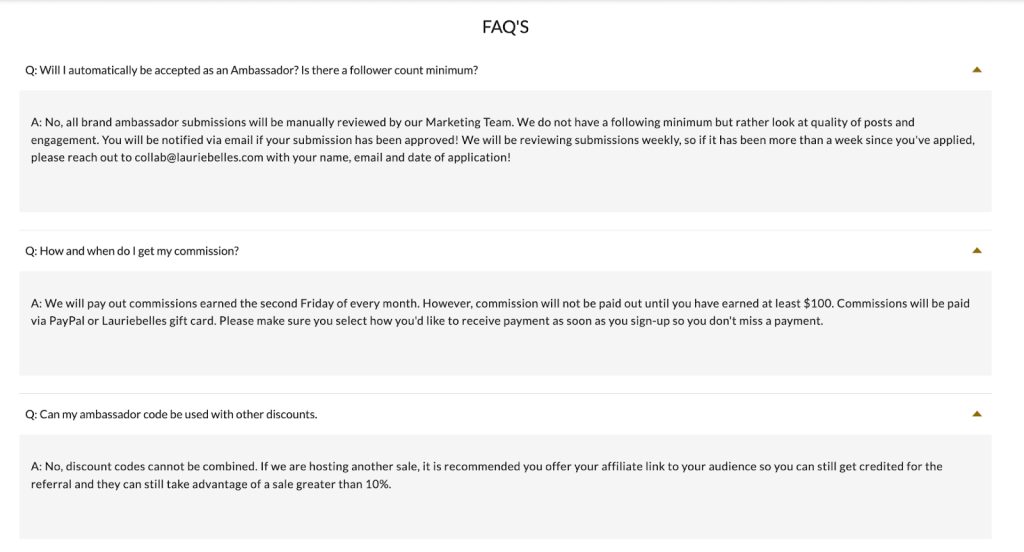
6. Maximize Impact by Repurposing Influencer-Generated Content
Ideal for:
- Unutilized backlog of influencer-generated content (IGC)
- Creators producing high-quality content
- Reducing in-house content production costs
Leveraging influencer-generated content (IGC) beyond its initial use is a smart strategy for
maximizing your marketing resources. This approach is particularly effective when:
- You have a wealth of existing influencer content that hasn’t been fully exploited.
- Your influencers have created high-caliber content that aligns well with your brand’s messaging and aesthetics.
- Your goal is to enhance your content strategy without significantly increasing production costs.
Expanding the use of IGC involves:
- Broadening Content Utilization: Don’t let effective influencer content fade away after its initial post. Identify high-performing pieces and brainstorm ways they can be reintegrated into your marketing mix.
- Diverse Content Repurposing: Consider using IGC across various channels and formats, such as in email marketing campaigns, on your website, in paid social ads, as part of case studies, or even in blog posts. This not only extends the reach of your content but also provides fresh material for your audience.
- Enhancing Brand Authenticity: Repurposed influencer content can add an authentic voice to your brand’s narrative. When consumers see real people endorsing your product, it adds credibility and relatability to your brand.
- Cost-Effective Strategy: By repurposing existing content, you can save on the costs and resources typically required for producing new content in-house.
Remember to obtain the necessary permissions for using influencers’ content in ways not originally agreed upon. Including usage rights in your initial contract can streamline this process. Some influencers may require additional compensation for extended usage rights, but the investment can be worthwhile given the potential ROI.
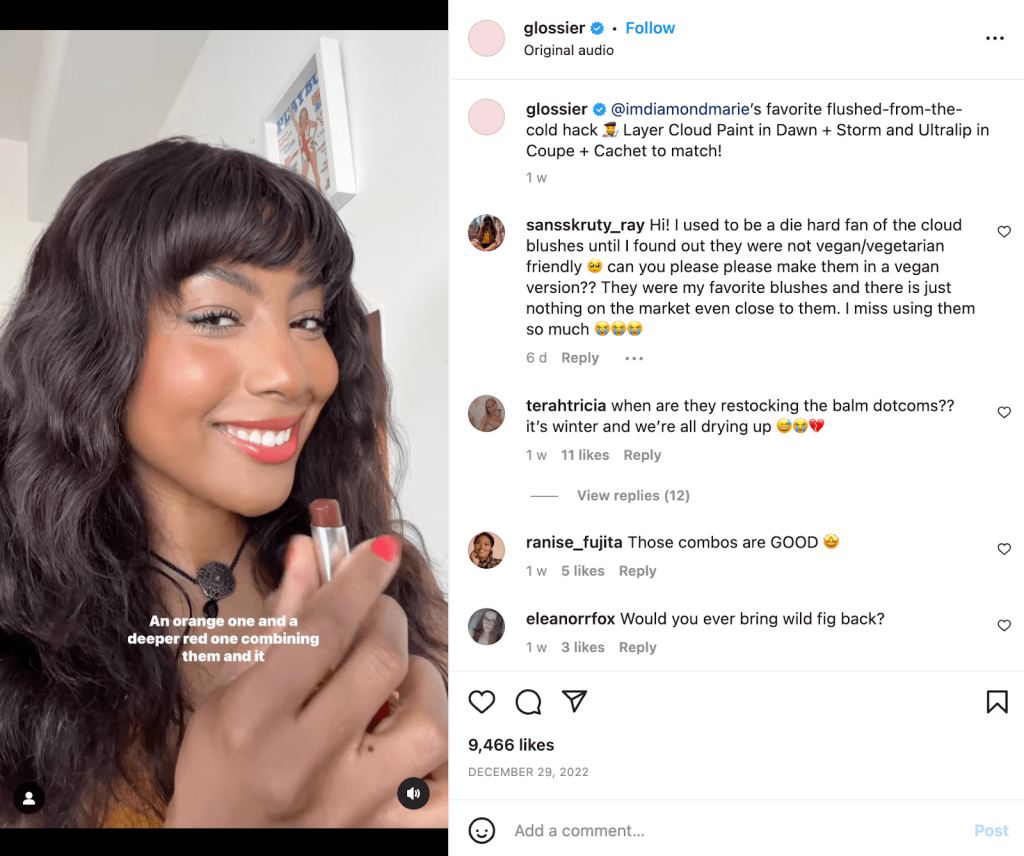
7. Amplify ROI by Focusing on High-Performance Influencers, Channels, and Niches
Ideal for:
- Experienced insight into effective influencer marketing strategies
- Documented success with specific channels or influencer marketing techniques
- A roster of high-performing influencers
Capitalizing on what already works can be a more straightforward path to scaling your influencer marketing efforts. This strategy becomes particularly relevant when:
- You’ve identified platforms, like TikTok over YouTube, that yield better results for your brand.
- Certain influencer profiles or content styles have consistently driven higher engagement and conversions.
- You have a group of influencers who have proven their value through tangible results.
To double down on your successes:
- Expand with Similar Creators: If certain influencer profiles have been particularly effective, look for similar creators to expand your reach while maintaining a proven strategy.
- Develop Brand Ambassador Programs: Transform your best-performing influencers into brand ambassadors. This fosters a deeper, more exclusive relationship with these influencers, potentially leading to more authentic and impactful content.
- Refine Channel Focus: If certain social media platforms have proven more lucrative, consider reallocating resources to these channels to maximize your presence and engagement there.
- Specialize in Niche Content: Identify the types of content that resonate most with your audience. Whether it’s tutorials, unboxings, or lifestyle content, focusing on these formats can enhance engagement and ROI.
By concentrating on areas with a proven track record, you can optimize your influencer marketing strategy for better results. This doesn’t mean abandoning experimentation or new initiatives, but rather ensuring that your core efforts are focused on the most fruitful areas.
